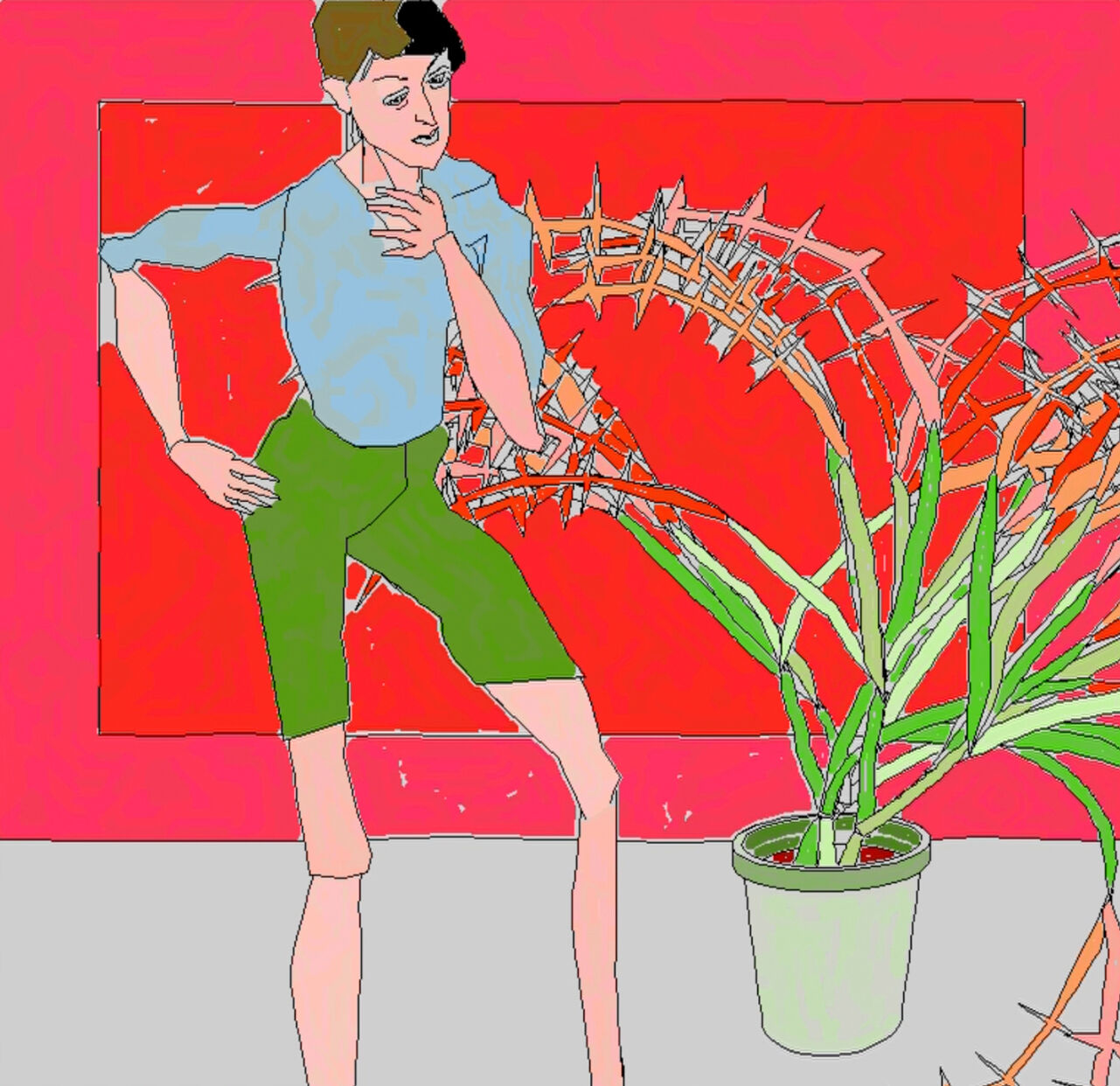Harold Cohen: AARON | Art & Artists
Feb 3–May 19, 2024
Harold Cohen: AARON | Art & Artists
The Figurative Phase
2
This section of the exhibition contains works representing a phase of AARON’s creations focused on figures, often in combination with plants or flowers. At its center is the projection of the AARON KCAT (Kurzweil CyberArt Technologies) software, which Cohen produced and released with computer scientist Raymond Kurzweil in 2001. KCAT became a signature iteration of AARON’s output and reflected Cohen’s efforts to make original art available to a greater number of people at a low price, as he released it in a screen-saver version.
AARON’s method of creating images differs fundamentally from that of currently popular AI software such as DALL-E, Midjourney, or Stable Diffusion, which use algorithms trained to make associations between images and text descriptions and generate their output from existing images on the basis of a user’s text prompts. AARON is a procedural system: it mimics human decision-making by processing its bodies of knowledge through instructions for completing tasks and if-then rules.
Cohen sought to always program the cognitive processes of a painter into his algorithms, imitating the work of understanding the relationship between line and form in representation as an abstract painter would. Cohen’s unique code creates legible figures and objects in infinite combinations with a spatial knowledge of the third dimension.

